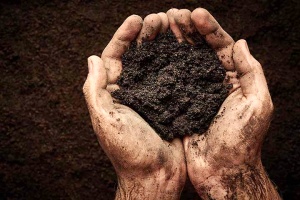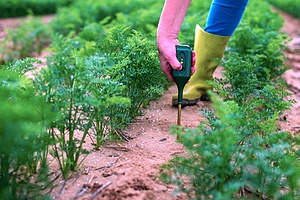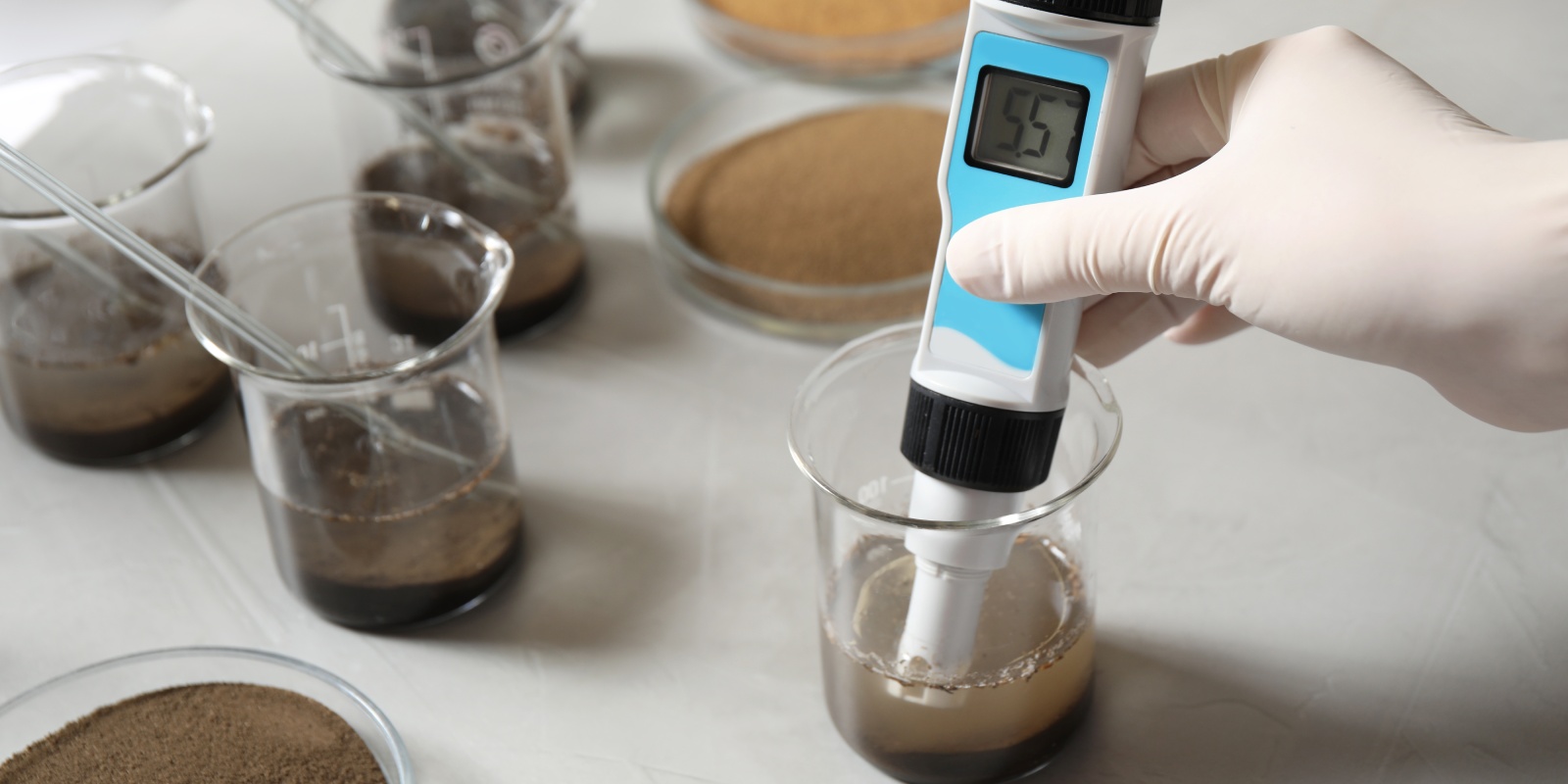 Soil permeability describes how water (or other liquid) and air are able to move through the soil. In the case of rainfall or irrigation, water moves very easily through highly permeable soils and very slowly through soils with low permeability.
Soil permeability describes how water (or other liquid) and air are able to move through the soil. In the case of rainfall or irrigation, water moves very easily through highly permeable soils and very slowly through soils with low permeability.
Importance
Permeability refers to the movement of air and water through the soil. This is important because it affects the supply of root-zone air, moisture, and nutrients available for plant uptake. Slow permeability is characteristic of a moderately fine subsoil with angular to subangular blocky structure.
Testing
Soil permeability, also termed hydraulic conductivity, is measured using several methods that include constant and falling head laboratory tests on intact or reconstituted specimens. Alternatively, permeability may be measured in the field using borehole permeability testing and field pumping tests.
Borehole Permeability Testing
The method consists of inserting into the ground a pipe which has on its end a perforated cylinder. Water is allowed to flow into the soil and the time for the head to drop a given distance is measured.
Pumping Tests
The basic principle of a pumping test is when we pump water from a well and measure the pumping rate and the drawdown in the well. These measurements are recorded. The measurements are put into the appropriate formula to calculate the hydraulic characteristics of the aquifer.
Why Are Soils Important
Soil functions are general capabilities of soils that are important for various agricultural, environmental, nature protection, landscape architecture and urban applications.
We depend on soil to perform many functions. Healthy soil gives us clean air and water, bountiful crops and forests, productive rangeland, diverse wildlife, and beautiful landscapes. Soil does all this by performing five essential functions:
Nutrient Cycling – Soil stores, moderates the release of, and cycles nutrients and other elements. During this process, nutrients can be transformed into plant available forms, held in the soil, or even lost to air or water.
Water Relations – Soil can regulate the drainage, flow and storage of water and solutes, which includes nitrogen, phosphorus, pesticides, and other nutrients and compounds dissolved in the water. With proper functioning, soil partitions water for groundwater recharge and for use by plants and soil animals.
Biodiversity and Habitat – Soil supports the growth of a variety of plants, animals, and soil microorganisms. This provides for a diverse physical, chemical, and biological habitat.
Filtering and Buffering – Soil acts as a filter to protect the quality of water, air, and other resources. Toxic compounds or excess nutrients can be degraded, thus made unavailable to plants and animals.
Physical Stability and Support – Soil has the ability to maintain its porous structure to allow passage of air and water, withstand erosive forces, and provide a medium for plant roots. Soils also provide anchoring support for human structures and protect archeological treasures.
Soil Composition
Soil is a material composed of five ingredients:
- Minerals
- Soil organic matter
- Living organisms
- Gas
- Water
Minerals are divided into three size classes:
- Clay
- Silt
- Sand
The percentages of particles in these size classes is called soil texture.
Soil Care
To promote good growth and development of your plants, prepare the soil before planting by:
- Adding organic matter
- Applying fertilizers
- Correcting acidity
- Plowing the seedbed properly
Take care of the soil during the growing season by applying starter fertilizer and water.
More On Soil Care
Organic Matter
Decomposition. One suitable definition of organic matter is biological material in the process of decaying or decomposing, such as humus. A closer look at the biological material in the process of decaying reveals so-called organic compounds (biological molecules) in the process of breaking up (disintegrating).
Fertilizers
Plants need several types of nutrients, some in large quantities. Nutrients that may not be easily available in soil in the right amount are the primary nutrients you find in fertilizer:
- Nitrogen for plant growth, leaf development and the production of vivid, green color
- Phosphorous for root growth and the creation of fruit, seeds and flowers
- Potassium, sometimes called potash, for root development and resistance to drought and disease
Acidity
Soil with pH levels above 7 are alkaline; those of less than 7 are acidic. The lower the pH, the more acidic is the soil. Soils in humid regions tend to be acidic; those in semiarid and arid regions tend to be around neutral or alkaline. Acidification is a natural process.
Acidity Fact Sheet
Plowing
With plowing, you break up the soil’s blocky structure. Plowing helps aid in the root growth and drainage of your soil. Remember, black soil increases the soil temperature faster than one that has plant matter on it. Farmers plow their fields to add nutrients to the soil and increase decomposition.
Factors that Affect Soil Permeability
Soil voids create an easy path for the movement of water, but other factors like hydraulic gradient, soil type, texture, and particle size distribution also affect permeability.
Porosity of Soil
Darcy’s Law
Dictates all results from soil permeability tests, is an equation describing the movement of fluids through a porous medium. This equation defines the coefficient of permeability or hydraulic conductivity of soils, a ratio of fluid velocity through the soil matrix to the hydraulic gradient.
Improve Soil Permeability
Improving Soil Permeability for Better Plant Growth
To enhance soil permeability, especially in clay-heavy soils, adding aged manure or compost is highly effective. These organic materials increase the variety of particle sizes and spaces in the soil, which improves drainage and supports healthier plant growth. By incorporating these amendments, you create a more porous soil structure, allowing air and water to move more freely through the soil. This simple adjustment can lead to significant improvements in the overall health of your garden or landscape.
Summary

Dirt Connections was started with one goal in mind: providing quality residential and commercial construction services to clients on time and on budget. Reach out for more information on how we can support your next project.
For your convenience our estimates are free and by appointment. Call 703-940-9949 for a free estimate today!















































